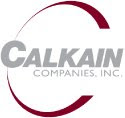By: Joan Pino
As an economics major, the past year as a student has been extremely interesting to say the least. The study of the demand, production, and consumption of goods and services is always at the center of debate during a recession. Different economists, such as Ben Bernanke and Robert Barro, have been interviewed repeatedly since the start of the economic downturn by members of the media trying to make sense of the United States’ current position and what it means for the future. The two major economic schools of thought, Keynesian and Classical, are what policy makers ultimately base their decisions on to drive our complex economy.
Classical economics was pioneered by Adam Smith in his book The Wealth of Nations in 1776. He advocated the concept of the “invisible hand”, which is based on the assumptions that people pursue their own economic self-interests and that prices adjust reasonably quickly to achieve equilibrium throughout the economy. Followers of the Classical school of thought discourage government involvement and policies because of their belief that they will be ineffective in eliminating business cycles (the business cycle: boom, recession, depression, recovery). Classical economists believe that the business cycle is the economy’s natural and best response to market conditions and should be left to reach equilibrium on its own.
In 1936, 160 years after Adam Smith’s The Wealth of Nations, Keynesian economics was developed by John Maynard Keynes in response to the Great Depression and unprecedentedly high rates of unemployment. The “invisible hand” wasn’t doing its job and people wanted an explanation. Keynes satisfied the need for a new economic theory with Keynesianism, which assumes that wages and prices adjust slowly, unlike the Classical model. The slowly adjusting markets account for unemployment because wages and prices don’t adjust fast enough to keep up with the number of people firms want to employ and the number of people who want to work. Therefore, Keynes suggested government intervention with an increase of its purchases of goods and services which would then stimulate demand for output and result in companies hiring more workers to meet the new demand. Thus, Keynesians believe government policies and intervention solve the problem of unemployment faster and more efficiently than the Classical approach of letting the market clear on its own.
Today’s policy makers tend to use some combination of the Classical and Keynesian approaches, although there are certainly several economists who strongly advocate one school of thought over the other. I hope my brief explanation of economic thought and policy helps you to understand our intricate economy a little better and the reasons for things such as stimulus packages and other government policies. Do you think you are a Keynesian, Classic, or somewhere in between?
Thursday, May 21, 2009
Keynesian vs. Classic: Which approach do you agree with?
Labels:
1776,
Ben Bernanke,
economics,
Joan Pino,
Keynesian,
Robert Barro,
The wealth of nations
Subscribe to:
Post Comments (Atom)





No comments:
Post a Comment